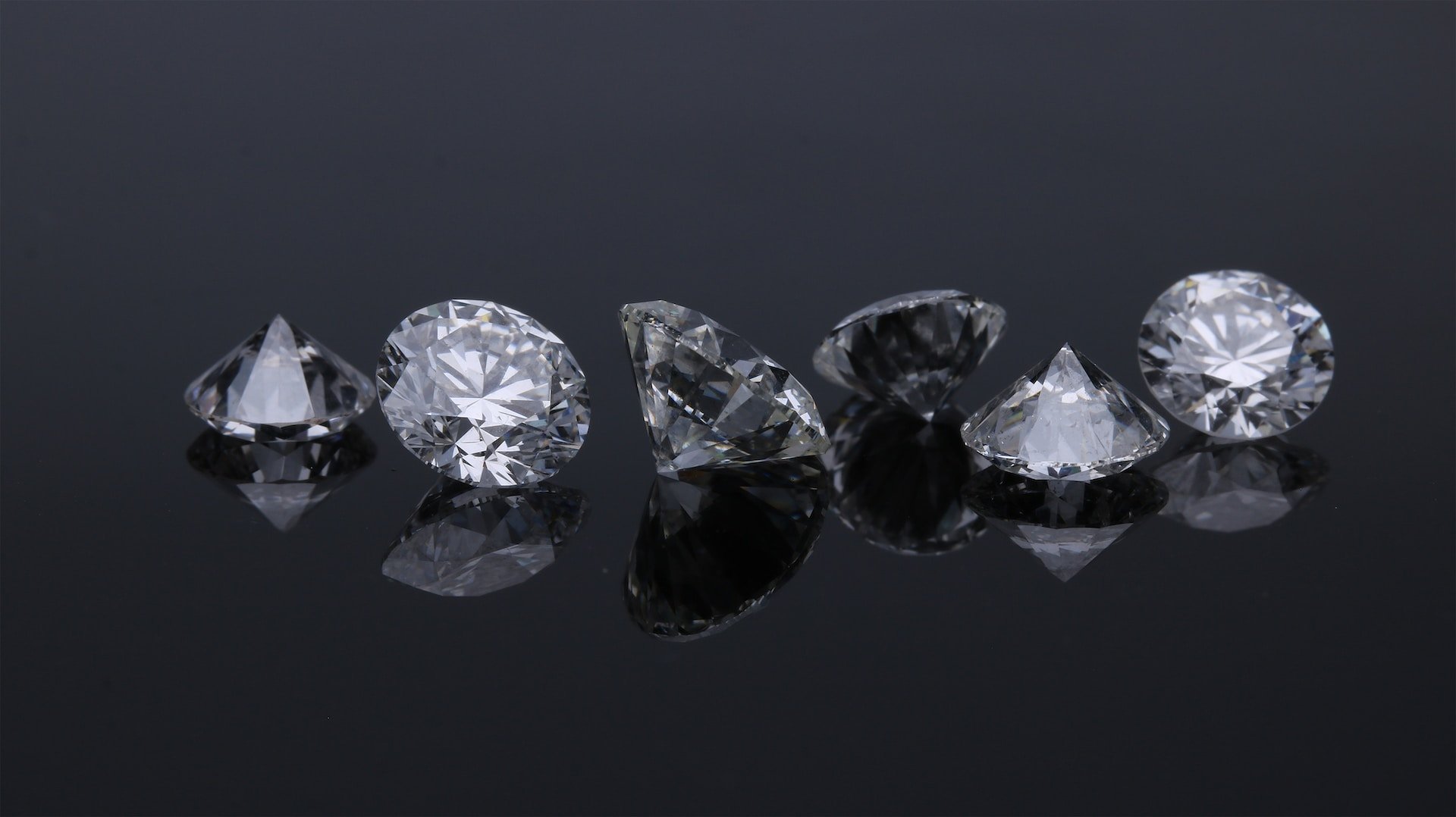
Technology is transforming scarcity into abundance... everywhere, with everything.
For example, would you consider anything scarcer than a perfect, 10-carat diamond?
Yet exponential tech is now allowing us to create large, perfect diamonds for the cost of electricity, methane, and water.
In today’s blog, I’ll share a story about how technology is disrupting the diamond industry (which was built on the notion of scarcity) and in the process making our world more abundant.
Let’s dive in…
An Abundance of Perfect Diamonds
In the 1940s, the popularity of diamond engagement rings had waned.
Considered by most a luxury reserved for the ultra-wealthy, the majority of Americans viewed the purchase of such rings as a waste of money. Enter De Beers, a diamond company founded in 1888, with their brilliant scheme of creating the illusion of value through scarcity, a campaign orchestrated by two formidable women in the advertising world: Frances Gerety and Dorothy Dignam.
Gerety, a copywriter for N.W. Ayer & Son, famously penned the phrase "A Diamond Is Forever" in 1947. When she presented her idea, the reception was lukewarm at best. Little did they know that this tagline would revolutionize the diamond industry and become the linchpin of De Beers' marketing campaign. Meanwhile, Dignam, in her publicity role, strategically placed diamonds within the public's sight and consciousness. As she observed, "the big ones sell the little ones."
Together, Gerety and Dignam were instrumental in fostering an emotional attachment to diamond engagement rings.
A carefully crafted narrative of sentimentality and eternal love was born, along with the perception that "a girl is not engaged unless she has a diamond engagement ring."
This campaign led to an exponential increase in De Beers' wholesale diamond sales in the United States, from $23 million in 1939 to $2.1 billion in 1979.
De Beers, controlling the world's rough diamond supply, manipulated the market to enhance scarcity. Geologically, diamonds are formed under extreme heat and pressure in the Earth's mantle, roughly 100 miles beneath the surface, then brought upwards by volcanic eruptions. The US Geological Survey estimates that global diamond reserves exceed 1 billion carats.
To combat a surplus of smaller stones, they introduced the “Four C's”: color, clarity, cut, and carat. This prompted buyers to consider not just size, but the overall quality of the diamond, reframing smaller stones as equally valuable.
In the 1980s, a new benchmark was set with the campaign: "Isn't two months' salary a small price to pay for something that lasts forever?" This cleverly tapped into the emotional value of a diamond, further enhancing its perceived worth.
It’s difficult to imagine a time when diamond engagement rings were not the standard. Even today, after more than 20 years of negative publicity about blood diamonds and poor conditions in diamond mines, research suggests that over 70% of brides in the US wear a diamond. In 2022, Americans spent an average of $5,225 on a 1 carat engagement ring. At the other end of the spectrum, a flawless 5-carat diamond could command a price of $700,000. Indeed, the largest perfect diamonds fetch millions of dollars, including the 59.60-carat diamond “The Pink,” which sold for $71.2 million in 2017.
But all of this is now changing, especially when you don’t need to dig diamonds out of the ground, when instead all one needs to do is “grow them in the lab” using plasma reactors and chemical vapor deposition.
Diamonds are the perfect example of going from scarcity to abundance. Materials science is now allowing us to create large and perfect diamonds for the cost of electricity, methane, and water… enter the Diamond Foundry.
Diamond Foundry: On a Mission to Create Perfect, Environmentally Friendly Diamonds
Back in 2013, with the closure of his promising solar power venture, Nanosolar, serial entrepreneur Martin Roscheisen found himself standing at the precipice of huge opportunity.
The collapse of Nanosolar was a bitter pill to swallow. Over a six-year period, Roscheisen had raised a staggering half a billion dollars of startup capital from the likes of Sergey Brin and Larry Page (who Roscheisen was friends and classmates with at Stanford), Reid Hoffman, Benchmark Capital, and the Carlyle Group. The problem? Low-cost Chinese competition in the solar market had proven an insurmountable hurdle, driving the company to shut down in February 2013.
Yet, for Roscheisen and his team of engineers from MIT, Stanford, and Princeton, the demise of one dream was the birth of another. "With our experience in solar manufacturing, our team started looking around at what other industries were there where we could make a difference," Roscheisen noted. Their target? De Beers and the entire diamond mining supply chain.
Roscheisen had a deep desire to disrupt this old-school “traditional industry,” which had been plagued by human rights and child labor issues. Driven by that passion, he started the Diamond Foundry.
Their first steps in manufacturing perfect lab-grown diamonds were difficult to say the least. Using their extensive materials science expertise gained from producing solar panels and silicon chips, the team struggled for years, with countless failed experiments and millions of dollars spent on the development of their plasma reactor, a machine able to deposit carbon one layer at a time.
By 2015, after three long years, tens of thousands of plasma-reactor design simulations, tens of millions of dollars invested, and three dozen engineers tirelessly working on the project, Diamond Foundry finally saw its first glimmer of success. A diamond. Not the clear, white gem they had anticipated but a “cognac” colored one. No matter the color, it was a diamond nonetheless—and a step in the right direction.
The process to create these diamonds was as captivating as the gems themselves. They would begin with a tiny sliver of a natural earth-mined diamond. The seed diamond would then be exposed to temperatures as hot as the outer layer of the sun within their custom-built plasma reactor. Here, layer upon layer of identical carbon crystal atoms would stack atop the seed diamond, and over two weeks of uninterrupted time in the reactor, they could grow up to nine carats.
Their success with the first diamond sparked a frenzy of productivity, and by the end of 2016, they were producing 1,000 carats of total diamonds per month, all of which were “flying off the shelves.”
Funding from prominent investors like actor Leonardo DiCaprio, Twitter/Medium founder Evan Williams, and Facebook co-founder Andrew McCollum, among others, began to pour in. Roscheisen's team had not only cracked the code to growing diamonds in a lab but had also convinced ten billionaires and Silicon Valley's tech royalty to invest in their project.
Where Diamond Foundry truly disrupts the global diamond market is its commitment to transparency and ethics, a stark contrast to an industry riddled with conflict and opacity. Roscheisen was inspired to challenge this industry status quo, aiming to build a "new Cartier" for those who value the origins of their jewels.
As Roscheisen points out, "Mining has the largest environmental footprint of any type of human activity. For a single carat of diamond, 250 tons of earth have to be dug up, 2,011 ounces of air pollution is released, and 143 pounds of carbon dioxide is emitted. We are eliminating the impact of mining on the environment and societies around the world." Diamond Foundry’s diamonds are ethically sourced and conflict-free, attracting a growing market of consumers who care deeply about the provenance of their diamonds.
Today, the company has perfected the means to create large-scale production of lab-grown diamonds to almost any size (up to 40 carats!), shape, or color. They have also started producing diamond-based wafers for a new generation of computational chip-designs.
Coupling its advanced technology with an unyielding commitment to ethical practices, Diamond Foundry isn't just cleaning up a dirty industry—it’s crafting a new paradigm for the diamond trade.
In fact, reflecting this broader trend, even De Beers has started to change its tune and join the bandwagon. The company, through its division Lightbox, is now producing 200,000 carats per year of lab-grown diamonds.
Why This Matters
In 2020, the world’s most prominent jeweler Pandora announced that it would stop selling all naturally-mined diamonds and switch exclusively to selling “lab-made diamonds.”
As we saw above, diamond mining is an incredibly environmentally taxing practice that has a track record of significantly contributing to war and human rights abuses across the African continent.
Pandora CEO Alexander Lacik said at the time that ditching mined diamonds was not only “the right thing to do,” but also that, “We can essentially create the same outcome as nature has created but at a very, very different price.”
Diamond Foundry has now taken this process of digitization and demonetization of diamonds to the next level.
Remember: Your job as an entrepreneur, creator or leader is to use technology to turn scarcity into abundance.
To do that, you’ll need to make a perspective shift so that you see possibilities for abundance where others see scarcity, and opportunities where others only see problems. That’s the subject of our next blog.
Have you heard the adage that you're the sum of the five people you mingle with most frequently?
In today's connected society, it might be more accurate to say you're the synthesis of the five group chats you're most active in.
At Abundance360, our group chats are teeming with personalities who have reshaped industries: founders steering billion-dollar empires, strategists from top Fortune 500 corporations, and investors managing portfolios worth over a billion dollars, spanning numerous significant sectors.
Here's a glimpse into our vibrant chat communities:
- City-Based (Local) Chats: Active in over 20 global hubs, fostering local meetups and event invites.
- Industry & Topic Specific Forums: Dedicated spaces for discussions on AI, Longevity/Biotech, Investing, and Books & Podcasts.
- A360 Women's Forum: A vibrant space connecting accomplished women across the globe.
Imagine having access to a group of passionate, like-minded innovators to discuss the latest in AI, Longevity, Biotech, Robotics, AV/VR, and Networks at any time—all in your pocket!
If you are ready, you can use the link below to apply to become a member of Abundance360.
I discuss the topic of technology creating abundance on my podcast. Here’s a conversation I recently enjoyed:
A Statement From Peter:
My goal with this newsletter is to inspire leaders to play BIG. If that’s you, thank you for being here. If you know someone who can use this, please share it. Together, we can uplift humanity.
Topics: Abundance Entrepreneurship Abundance 360



.png?width=331&height=80&name=Layer_1%20(1).png)
-1.png?width=318&height=77&name=Layer_1%20(1)-1.png)





